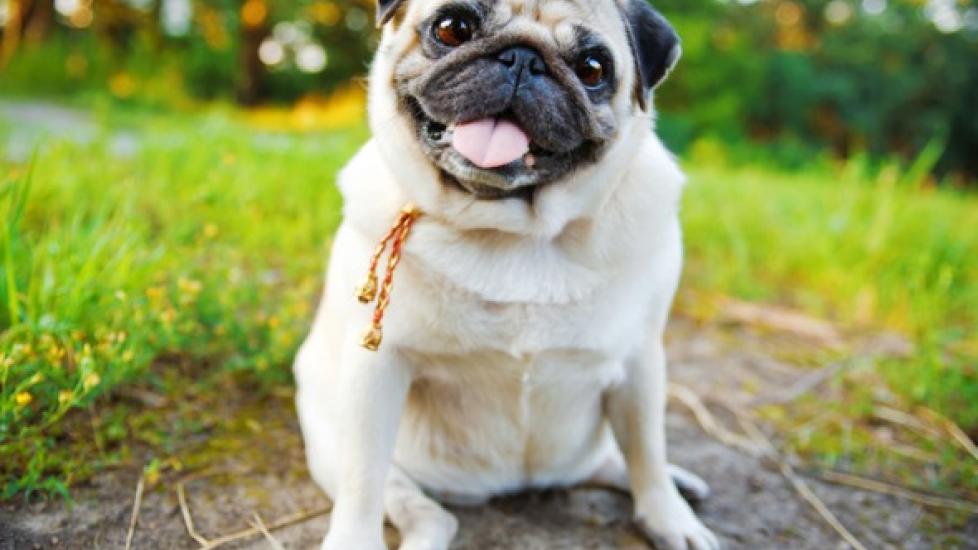How Can I Get My Dog to Lose Weight?
Image via iStock.com/o_sa
By Dr. Sarah Wooten
Have you been frustrated because your dog doesn’t lose weight, no matter what you do? Obesity in dogs is one of the biggest health concerns that veterinarians and pet guardians battle.
Sometimes, when it comes to weight loss for dogs, the answer is easy: reduce calories, increase exercise, and BOOM—the pounds come off. Other times, it isn’t so simple.
If you have had your dog on the diet train and nothing is moving, try these five veterinarian-approved recommendations to tip the scales back toward a healthy weight.
Be Religious About Daily Calorie Limits
If you want to help a dog lose weight, then there are two non-negotiables that are necessary for success: you must have a daily calorie limit that has been calculated, and you must stay under that number.
A cheat day every now and then is okay, but in order to get the fat to burn away, the ins must be less than the outs, and the total daily calorie count matters. This is especially true for small dogs—even an extra kibble or two every day or will add up to unhealthy weight.
Not sure what your dog’s daily calorie limit should be? The easiest way is to ask your veterinarian—many vets are happy to calculate this number for you. They can also tell you what your dog’s ideal weight goal is.
You can also visit Pet Nutrition Alliance and use their online calculator to calculate the calories. Once you have this number, then you will need to divide it by the kcal/cup number that is on your dog food bag. This will be on the back, in the AAFCO nutritional statement. If you can’t find it, ask your veterinarian or veterinary technician for help—they can point it out to you.
Once you divide the total daily calories by the kcal/cup, that will give you the number of 8-ounce cups of food to feed per day. If there is a decimal, round down to the closest measurable number, such as ⅔, ½ or ¾. If you feed treats, make sure to include those in the total daily calorie count as well!
No More Doggy Dishwasher
One overlooked source of excessive calories is people food. Yes, feeding dog treats and sharing food is an important part of the bond you share with your dog, but your heartwarming goodies might be sabotaging your weight-loss efforts.
If you feed any people food, include it in the daily calorie count. Don’t forget to add calories consumed from licking plates clean! Many people let their dogs lick their plates after they finish eating or while they sit in the dishwasher, but this is where sneaky calories hide, even in BBQ sauce remnants.
Either stop letting your dog ‘wash’ the dishes, or include it in the daily calorie count.
Super Sleuth Serial Food Sneaking
Do you have kids? Do they drop food? Does your dog snarf up crumbs? This could be a source of excess calories. Do you have grandparents that drop by with dog biscuits in their pocket? This is also a source of excess calories.
Do you have multiple pets? Is your pup finishing other pets’ food? This is another source of excess calories.
You may have to do a little sleuthing to see if somebody is secretly feeding your dog extra food or if your dog is a serial food sneaker. People are often surprised at how far their enterprising pooches will go to find food.
It can be challenging to stick to the total daily calorie count when there are multiple people or children feeding one dog. Have a family meeting, decide who is going to feed the dog, and get everyone to agree to not feed extra.
The best practice is to set out what your dog will eat for the day in baggies, and when it is gone for the day, it is gone. No. More. Food.
Utilize a Therapeutic Diet
Food technology has come a long way, especially when it comes to therapeutic diets. In particular, Hill’s Prescription Diet metabolic weight management dog food has been a miracle product for many dogs that aren’t losing weight.
If the needle won’t budge even though you have cut back calories and increased exercise, try feeding a therapeutic weight control dog food, like Metabolic diet, instead of your dog’s regular maintenance diet.
There are ingredients, like L-carnitine, that help ramp up fat burning, and the food still delivers a complete and balanced diet even though calories are restricted. The same cannot be said for feeding restricted amounts of regular dog food.
Have Your Dog’s Hormones Checked
Most dogs should be able to reach their weight-loss goals within three to six months.
If you have followed all of these instructions and been religious about the weight-loss program and still aren’t seeing results, then maybe your dog’s hormones are to blame. Just like people, dogs can have hormonal imbalances that lead to weight gain and having difficulty losing weight.
Conditions like Cushing’s syndrome (hyperadrenocorticism) in dogs and a sluggish thyroid are common hormonal problems that will make it difficult for a dog to lose weight. If you are several months into the weight-loss program and are not seeing results, then schedule an appointment with your veterinarian and ask to have your dog’s hormones checked.
If your dog has one of these hormonal problems, prescription pet medication is available to correct the condition and get your dog back on track to a healthy lifestyle.
Follow these veterinarian-recommended tips, and you should see success with your dog’s weight loss.
Help us make PetMD better
Was this article helpful?
